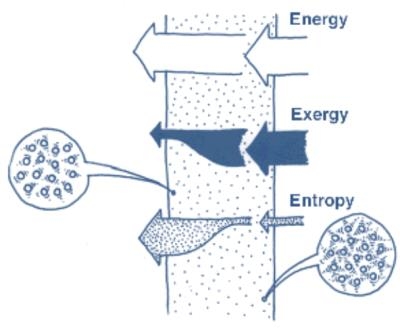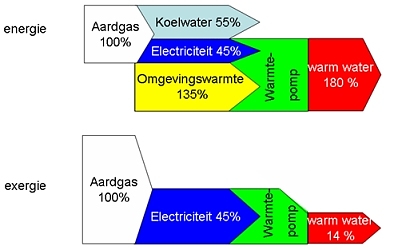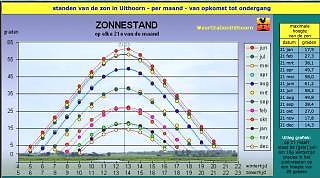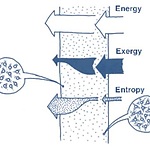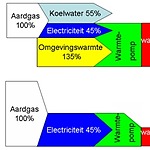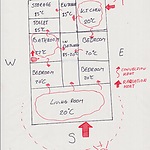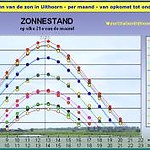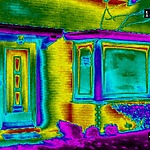What are exergy principles?
Energy can exist in various forms, which can be used differently. The first law of thermodynamic explains that energy never get lost. The second law brings some nuance, by using energy the form of energy changes and will have another quality. During the process, the quality of energy decrease (exergy) and the entropy increases.
Exergy is the maximum theoretical of workload, that can be obtained from a system, within the process the medium and its surrounding will reach an equilibrium state. In an ideal conversion, no exergy is lost and the work potential is equal for the in- and output. However, in each conversion exergy is destroyed, this called entropy (fig. 1). The optimal process becomes closer when the gained exergy is higher. For example, an old fashion bulb is using energy, this produce light and heat, the heat get lost in the process, but has a low exergetic value and could be reused to heat something.
Fig. 1 Energy= Exergy + Entropy http://www.lowex.net/guidebook/the_exergy_%20approach/the_exergy_%20approach.htm
The next example (fig. 2)will illustrate the energy content of a product. When burning butane gas in a power plant, 100% of energy comes out. When converting the heat into electricity, only 45% of potential energy is left, so the exergy of this process is 0.45. Now this energy is used in a heat pump, this produces heat, but from the 100% of energy that goes in, only 14% of heat comes out. This means, the heat pump has an exergetic value of 0.14. As known, the efficiency of the heat pump could be up to 600%, but that’s only when looking to the amount of energy coming in and out, when looking for exergetic potential, it seems to be rather low with a lot of improve possible.
Fig. 2: Energy vs. Exergy http://www.cocos.nl/nl/545/Exergie/Wat_is_exergie.html
In practice, there are no exergy principles described jet. It supposed to maximize the useful energy it can be obtained by reusing energy, cascaded energy, upcycle energy and minimalizing the losses with the storage and transport of energy.
How to cope with exergy principles?
During the design phase, the exergy principle is always in the mind. The configurations of the rooms and how they are connected already could have a large influence. Placing living areas like lounge and bedrooms on the warmest side of the building, the south side. Rooms which need less heating like bedrooms could be placed on the north side. While the kitchen prefer the east side, to catch the morning sun. Rooms have different temperature optimal and periods when they are used, by placing rooms who can benefit from each other directly adjacent, this principle is shown in fig.3. Cascaded rooms, functions or temperatures is the most efficient way to reuse heat and have a high exergy potential.
Fig. 3 Optimal room configuration.
Ventilation is very important, it helps to directing the air, to heat up other rooms. But it also can cool the building without using energy. The design should be based with openable windows on both side, so cross ventilation is possible. In the warm summer month the building can cool down during the night by cross ventilation. Using mechanical ventilation only when needed, like the kitchen and perhaps the bathroom.
The side of the windows should be adapted on the location of the building, the amount of sun that is needed to heat up the building naturally. Though, for summer shading is needed to control the solar gain. Designing a correct size and shape of the first floor can create overhang and provide shading in summer but let the sun in during the winter months. Figure 4 shows the height of the sun in the Netherlands and which periods of solar access want to block and which are needed. On the Southside the solar gain is optimal, so maximizing the amount of windows with controlled shading is prefer. The eastside has the second highest percentage of glazing, vegetation is a good solution for shading control. The north facade is the coldest with the least solar potential, sufficient window openings for cross ventilation would be enough. The west side is exposed to large amount of evening sun in summer and less in winter, only windows for cross ventilation are needed.
Fig. 4 https://oosterwold.wordpress.com/2015/03/30/stand-van-het-huis-t-o-v-de-zon/
Windows, doors and their frames result in thermal bridges fig. 5, energy is lost hear and the thermal comfort is negatively effected. Thermal bridges are found by connections, like the roof top, roof to wall, frame to wall, still, sewer and extensions. Reducing thermal bridges and building air tight is very important to increase the insulation properties of the wall and contribute by the thermal comfort of the house. Using thicker insulation material or better, to reach a higher level is not the most effective way. Using double layered insulation is far more effective, because the second layer covers the stud
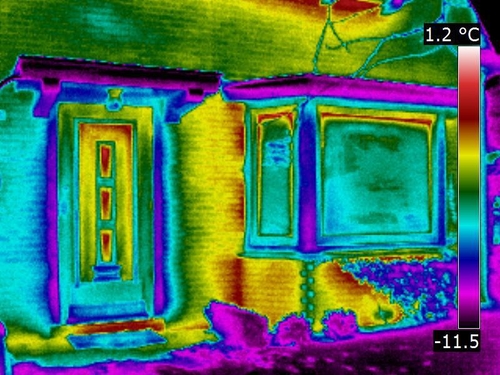
Fig. 5: Thermal bridges extension(EnjoyEnergy)
Next to optimal sing the solar gain and reduce the energy losses, energy consumption could be reduced by using the write mechanical products. For example using LED instead of bulbs and calculate the amount of luminance is needed. Making use of mechanical product that can cascade or upcycle energy, like a heat pump or heat exchanger. There are a lot of sources that can be used to create or store heat and cold, thing about the outside air, the sewer, the underground, ground water, water containers, cavity wall, greenhouse, but also small products as the fridge, cooking, shower etc. Cascaded energy or upgrading by making closed loops between actions and products can maximize the exergy potential of a house.
Having a closer look to the materials that are used, there is not a direct link to exergy. Tough some materials have a large energy consumption during the production process or can’t be recycled. Using materials with a low primary energy would be preferable. The life cycle assessments can help finding the right materials. Also the water use can be reduced, by collecting rain water, storage of water and cleaning water. Colleting water would be smart, because water has a high energy saving potential, this would contribute to create a win-win situation.
